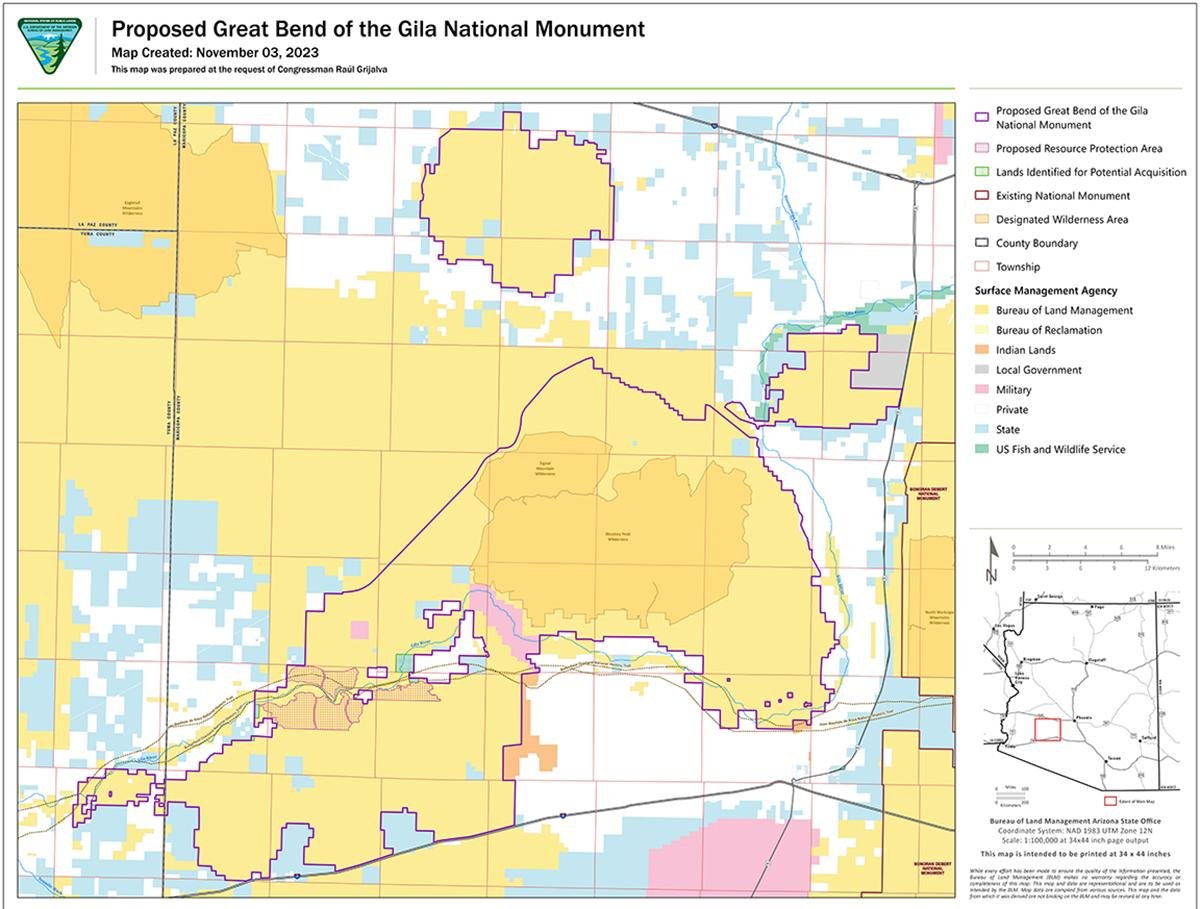arizona
Grijalva Pushes Landmark Bill to Create Great Bend of the Gila National Monument

U.S. Rep. Raúl M. Grijalva has put forth legislation to establish a new national monument near Gila Bend, Arizona. This proposed designation, known as the Great Bend of the Gila National Monument, would protect 376,963 acres, highlighting its cultural and ecological importance.
At least 13 federally recognized tribes have deep-rooted connections to this area. Supporters emphasize that such a move addresses pressing concerns over land and animal preservation. “The Great Bend of the Gila is a sacred place rich with history and deeply significant to all the communities connected to it,” Grijalva stated.
Grijalva’s plan includes the creation of a tribal commission, enabling Indigenous groups to influence land management decisions and preventing exploitation for mining or development. The measure received endorsements from several tribes, including the Quechan Indian Tribe, Salt River Pima-Maricopa Indian Community, Tohono O’odham Nation, and Yavapai-Prescott Indian Tribe.
“The Tohono O’odham Nation and other tribes have deep cultural and religious connections to the Great Bend of the Gila stretching back to time immemorial,” said Tohono O’odham Nation Chairman Verlon Jose. “We appreciate Congressman Grijalva’s leadership in working to protect this environmental and cultural treasure.”
House Democrats on the Natural Resources Committee, guided by Grijalva, underscored the area’s notable sites, including rich rock art, petroglyphs, and ancient village remnants. Locations such as Sears Point, Paint Rock Petroglyph Site, and Gillespie Dam Bridge have all been listed on the National Register of Historic Places.
This proposed monument would lie near the Sonoran Desert National Monument, established by President Bill Clinton in 2001. Arizona boasts 19 national monuments, the highest in any state, including the Chiricahua, Organ Pipe Cactus, Ironwood Forest, and Casa Grande Ruins monuments in Southern Arizona.
National monuments can be created by Congress or through a presidential proclamation under the Antiquities Act, a law from the early 20th century allowing presidents to protect precious federal lands as monuments.
The bill has already garnered support from several representatives, including Jared Huffman (D-Calif.), Joe Neguse (D-Colo.), Melanie Stansbury (D-N.M.), André Carson (D-Ind.), Dina Titus (D-Nev.), and Earl Blumenauer (D-Ore.). Numerous organizations such as Archaeology Southwest, National Parks Conservation Association, and the Center for Biological Diversity have also backed the measure.
In a related historical context, the Trump administration, supported by Arizona congressmen, sought to remove the protected status of the Sonoran and Ironwood national monuments in 2017. However, this initiative was not successful.
Southern Arizona’s Chiricahua National Monument has also been the subject of recent efforts to achieve national park status, which would be Arizona’s fourth. Despite attempts in 2022 and 2023, the proposal has not yet passed Congress.


















